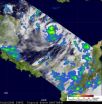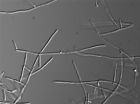(Press-News.org) Basic physical limitations following breast cancer treatment can have far-reaching consequences that substantially affect how long a patient lives.
According to a new study published online in the Journal of the National Cancer Institute, breast cancer survivors with functional limitations – an inability to perform normal daily activities – caused by the disease or its treatment are more likely to die because of overall poorer health.
The scientists found that survivors who reported physical limitations after breast cancer treatment have the same risk of dying from breast cancer as those without limitations but are more likely to die from other diseases. In particular, investigators found that older women, as well as overweight breast cancer patients, were more likely to experience functional impairments for at least 18 months after treatment.
The research, the first of its kind, points to risk factors where, with simple modifications in habits that allow more physical activity, health might be greatly improved.
The impairments, affecting motion, strength and dexterity, include an inability to kneel, to lift items heavier than 10 pounds or to handle small objects, to stand in place, to sit for long periods, to walk up and down a flight a stairs, to walk two or three city blocks.
"Our study provides evidence of why it is important to develop interventions that improve physical function, to mitigate the adverse effects of physical limitations,'' said Dejana Braithwaite, PhD, first author of the study and assistant professor of Cancer Epidemiology at UCSF's Helen Diller Family Comprehensive Cancer Center. "Intervention strategies – on the part of the individual, the community and the health provider – should emphasize physically active lifestyles.''
Braithwaite collaborated with researchers at the Kaiser Permanente Northern California, the University of Utah, the University of California and Brock University in Canada.
"When we talk about improving physical function, we are talking about improving a woman's ability to perform normal functions of everyday life, like walking around the block, getting up easily from a chair or carrying a heavy bag of groceries,'' said Bette Caan, DRPH, senior author and principal investigator of the Life After Cancer Epidemiology Study and Senior Research Scientist at Kaiser Permanente Division of Research. "These activities appear to make a difference in a woman's chance of survival after a breast cancer diagnosis.''
With better detection and treatment, more breast cancer patients are surviving longer.
According to the National Cancer Institute, an estimated 2.5 million women with a history of breast cancer were alive in 2006 – most of them cancer-free. The overall five-year survival rate for localized breast cancer is 98 percent, reports the American Cancer Society, while the survival rate for breast cancer that has spread to the chest wall or lymph nodes is in the 80 percent range; at least 25 percent of breast cancer patients whose disease has metastasized survive five or more years.
Despite improved survival rates, many patients struggle with physical limitations after treatment – as many as 39 percent, according to the new findings – yet little attention has been paid to those limitations and related problems, particularly among older women.
To determine how physical limitations following initial breast cancer treatment affect mortality, the scientists studied 2,202 women in California and Utah with breast cancer, questioning them about endurance, strength, muscular range of motion, and small muscle dexterity following initial treatment such as chemotherapy, radiation therapy or hormone therapy. The women were part of the Life After Cancer Epidemiology cohort, and were followed for up to 11 years after diagnosis.
Outcomes differed according to disease stage. Women with localized cancer had higher rates of non-breast cancer death due to functional limitations than those with more advanced disease. In addition, women with functional limitations may have poorer treatment tolerance because they are more likely to be older, less physically active, and overweight or obese. As a result, the authors speculate that women with good physical function who tolerated therapy well might be over-represented in the group with more advanced disease.
"There is increasing evidence that regular physical activity, as little as 30 minutes of moderate intensity walking each day, can reduce the risk of breast cancer recurrence,'' said study co-author Patricia Ganz, MD, a medical oncologist and director of cancer prevention and control at UCLA's Jonsson Comprehensive Cancer Center. "Women with functional limitations are less likely to be able to maintain regular physical activity and would likely benefit from intervention to reduce their limitations and increase physical activity.''
Though the researchers did not specifically study the mechanism, they suggest that functional limitations may be associated with chronic inflammation, a key aspect of the immune system's defenses, which can lead to diminished function of organs or systems.
In an accompanying editorial, Harvey Jay Cohen, MD, director of the Center for the Study of Aging and Human Development at Duke University Medical Center said the research "enhances our broader understanding of the issues surrounding functional status assessment and cancer outcomes.'' http://jnci.oxfordjournals.org/content/early/2010/09/22/jnci.djq365.full.pdf+html.
INFORMATION:
The research was supported by grants from the National Institutes of Health, National Cancer Institute, Bay Area Breast Cancer SPORE (Specialized Program of Research Excellence), the Hellman Family Foundation, and the Robert Wood Johnson Foundation Health & Society Scholars Program at the University of California, San Francisco and Berkeley. Data were derived from the LACE study, which was supported by funds from the National Cancer Institute and by the Utah Cancer Registry with additional support from the Utah Department of Health.
UCSF is a leading university dedicated to promoting health worldwide through advanced biomedical research, graduate-level education in the life sciences and health professions, and excellence in patient care.
The Kaiser Permanente Division of Research conducts, publishes, and disseminates epidemiologic and health services research to improve the health and medical care of Kaiser Permanente members and the society at large. It seeks to understand the determinants of illness and well-being and to improve the quality and cost-effectiveness of health care. Currently, DOR's 500-plus staff is working on more than 250 epidemiological and health services research projects. For more information, visit www.dor.kaiser.org.
Additional contact: Maureen McInaney-Jones, Communications Manager, Kaiser Permanente Division of Research, Northern California, 510-891-3173; Maureen.McInaney@kp.org
Follow UCSF on Twitter at http://twitter.com/ucsf
Physical limitations take a significant toll in breast cancer survivors
2010-09-25
ELSE PRESS RELEASES FROM THIS DATE:
Scientists release first cultivated ohelo berry for Hawaii
2010-09-25
The first cultivar of 'ōhelo berry, a popular native Hawaiian fruit, has been released by U.S. Department of Agriculture (USDA) scientists and their university and industry cooperators.
'Ōhelo (Vaccinium reticulatum Smith) is a small, native Hawaiian shrub in the cranberry family, commonly found at high elevations on the islands of Maui and Hawaii. As people scour the landscape to harvest this delectable berry for use in jam, jelly and pie filling, they unfortunately disrupt the fragile habitats where this plant grows.
In an effort to reduce damage to the ...
National study: Abortion does not cause depression or low self-esteem in adolescents
2010-09-25
CORVALLIS, Ore. – A new study has determined that teenagers who have abortions are no more likely to become depressed or have low self-esteem than their peers whose pregnancies do not end in abortion.
The study conducted by researchers from Oregon State University and University of California, San Francisco, is the first to use both depression and low self-esteem as outcomes with a nationally representative sample of adolescents.
The researchers found that young women in the study who had an abortion were no more likely to become depressed or have low self-esteem within ...
Moving closer to outdoor recreation not a recipe for being more physically active
2010-09-25
You'd think that people choosing to live near to outdoor recreation amenities would have a lower body mass index or BMI thanks to an increase in all that healthy outdoor activity right on one's doorstep. Yet a new University of Alberta study looking at the relationship between reasons for choosing a neighbourhood to live in, physical activity and BMI, shows that's simply not the case.
In fact researchers found that those who said they'd moved to be closer to outdoor recreation opportunities actually showed a marked increase in BMI over the six years of a longitudinal ...
Researchers create first molecule blocks key component of cancer genes' on-off switch
2010-09-25
BOSTON—In the quest to arrest the growth and spread of tumors, there have been many attempts to get cancer genes to ignore their internal instruction manual. In a new study, a team led by Dana-Farber Cancer Institute scientists has created the first molecule able to prevent cancer genes from "hearing" those instructions, stifling the cancer process at its root.
The study, published online by the journal Nature, demonstrates that proteins issuing stop and start commands to a cancer gene – known as epigenetic "reader" proteins – can be targeted for future cancer therapies. ...
ONR rolls out combat and tactical vehicle fleet at Modern Day Marine Expo
2010-09-25
With several advanced warfare vehicles and a lineup of exciting technologies, the Office of Naval Research (ONR) will showcase its latest expeditionary equipment at the 2010 Modern Day Marine Exposition scheduled Sept. 28-30 at Quantico Marine Corps Base, Quantico, Va.
Modern Day Marine is one of the world's largest trade shows featuring expeditionary warfare equipment. More than 400 exhibitors and 8,000 attendees are expected to attend the event—now in its 30th year—for an up-close look at equipment and systems that support the U.S. Marine Corps and other allied forces' ...
NASA satellites see Tropical Storm Matthew grow quickly, warnings up in Central America
2010-09-25
An instrument on NASA's Aqua satellite noticed increasing colder cloud top temperatures of tropical depression 15 in the south-central Caribbean just before it strengthened into Tropical Storm Matthew late on Sept. 23. The TRMM satellite also spotted heavy rainfall within the system. Matthew is now headed to the western Caribbean and watches and warnings are in place as Matthew may continue to strengthen.
Cloud top temperatures indicate the strength of the storm to forecasters. The colder the cloud top temperatures, the stronger the convection and uplift. When cloud top ...
NASA's CloudSat satellite sees a powerful heat engine in Typhoon Malakas
2010-09-25
Towering thunderstorms and heavy rainfall are two things that NASA's CloudSat satellite saw as it passed over Typhoon Malakas, and those two factors confirm a strong storm. NASA's CloudSat satellite's Cloud Profiling Radar can basically slice a tropical cyclone in half and take a look at its clouds and rainfall, and that's what it did when it passed over Typhoon Malakas on Sept. 23.
CloudSat flew over Typhoon Malakas during the daytime on Sept. 23. At that time, Malakas had a minimum central pressure of 965 millibars, maximum winds of around 115 mph (100 knots), and ...
GOES-13 Satellite sees Lisa a tropical storm...for now
2010-09-25
The GOES-13 satellite has been keeping an eye on Tropical Storm Lisa and watched her birth, graduation to depression then tropical storm and back to depression. Now, Lisa has grown back to tropical storm status, but it may be short-lived.
At 11 a.m. EDT on Friday, Sept. 24, Tropical Storm Lisa had maximum sustained winds near 50 mph and she may strengthen and weaken over the weekend, but by Sunday colder waters will zap her energy source and she is forecast to be a depression.
Meanwhile, on Sept. 24, she was still frolicking in the eastern Atlantic, about 320 miles ...
The psychology of financial decision-making and economic crises
2010-09-24
How could the current financial crisis have happened? While fingers have been pointing to greedy banks, subprime-loan officers, and sloppy credit card practices, these are not the only contributors to the economic downturn. A new report in Psychological Science in the Public Interest, a journal of the Association for Psychological Science, examines the psychology of financial decision making, including the role of risk in making economic choices, how individuals behave in stock and credit markets, and how financial crises impact people's well-being.
Risk taking is a ...
Microbiologists find source of fungus's damaging growth
2010-09-24
SAN ANTONIO, Texas, U.S.A. (Sept. 22, 2010) – Candida albicans, a fungus that kills more than 10,000 people with weakened immune systems each year, grows more dangerous as it forms and extends long strands of cells called hyphal filaments. In a paper published this month, UT Health Science Center San Antonio microbiologists describe a key factor involved in this damaging growth.
This finding may eventually lead to targets for antifungal strategies, the scientists said.
Patricia Carlisle, a Ph.D. student at the Health Science Center, and David Kadosh, Ph.D., assistant ...




